Boosting Construction Industry With Artificial Intelligence
AI • May 13,2016

Boosting Construction Industry With Artificial Intelligence
Artificial intelligence will be responsible for the next industrial revolution and will change the world in ways we can’t predict now. Perhaps you might read our previous articles about influence of AI in agriculture and farming. Construction is an excellent example of industry that will be affected the most from a replacement with automation. AI could save construction businesses money if it becomes smart enough to determine price variants in companies spending for construction materials or hiring engineering companies. We created a list of real use cases that will shape construction industry in near future.
Autonomous TMA Truck
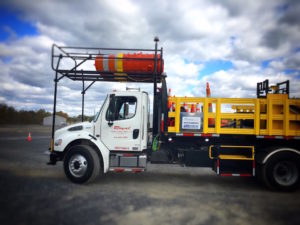
Autonomous TMA Truck (ATMA) is a vehicle where no driver needed. It means that driver can be removed from a vehicle in various dangerous situations. It’s outfitted with an electro-mechanical system and fully integrated sensor suite that will enable leader/follower truck capability that allows the ATMA to follow a lead vehicle completely unmanned. NAV module transmits the GPS position data called ‘eCrumbs’ back to the follower vehicle, which then uses data to follow the exact path and speed of the leader vehicle at each point along the route. This technology is being adapted to the roadway construction industry.
ATMA truck is outfitted with an electro-mechanical system and fully integrated sensor suite, enabling leader/follower capability. ATMA can follow a lead vehicle completely unmanned and NAV Module can be easily unstrapped and removed from one vehicle and installed on another if a different leader vehicle is required.
LENS: Predictive modeling system for construction industry
Lens is a model-based estimating tool that ties the Autodesk Revit Building Information Model (BIM) to Art to Science Estimating (ASE) at the earliest stages of a project. This platform allows users to work with any model, regardless of modeling standards, at earliest stages, improve speed in which a takeoff can be completed and reduce time required to update estimates during entire pre-construction process. It also helps identify items that may be normally missed due to the possibility to see the intent of a designer as early as design development.
Efficient air conditioning systems in commercial buildings
 Machine learning techniques can be used to predict building A/C energy consumption to help with efficiency of automating air conditioning systems. Effects of usage can be measured with sensors on the A/C system energy consumption. With help of third order polynomial support vector regression (SVR) model you can predict building of A/C system. Also supervised learning algorithms can be used predict the amount of energy consumed to maintain the temperature at a desirable level while artificial neural networks can achieve good results in predicting consumed energy in commercial buildings and offices.
Machine learning techniques can be used to predict building A/C energy consumption to help with efficiency of automating air conditioning systems. Effects of usage can be measured with sensors on the A/C system energy consumption. With help of third order polynomial support vector regression (SVR) model you can predict building of A/C system. Also supervised learning algorithms can be used predict the amount of energy consumed to maintain the temperature at a desirable level while artificial neural networks can achieve good results in predicting consumed energy in commercial buildings and offices.
Detection potential building collapse in post-earthquake environment
Most earthquakes involve widespread damage, ongoing aftershocks and losses in billions of dollars. With help of artificial intelligence and low cost remote sensing data you can detect building collapse in post-earthquake environment. Being able to map the distribution of damage quickly and with confidence can help locate appropriate aid to the most severely impacted regions. Accurate mapping can also aid in determining whether citizens can return safely to their home. In addition it can prevent casualties from delayed building collapses. Using the machine learning techniques developed, future disaster relief professionals might be able to use a more limited field-based damage assessment, in combination with remote-sensing-based data, to identify highly damaged areas more quickly and at lower cost.
Earthquake-induced structural damage classifier
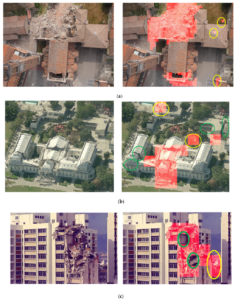 Developing a structural damage classifier with support vector machines can help with prediction of post-earthquake damage state, given the building features and input ground motion. Classifier can also be used for accelerating post-earthquake damage evaluation of critical buildings. This will allow faster recovery time and decrease financial losses expected from downtime and repair. With k-means clustering, each ground motion is categorized based on frequency content but most influential feature is the correlation between the fundamental period and the earthquake type.
Developing a structural damage classifier with support vector machines can help with prediction of post-earthquake damage state, given the building features and input ground motion. Classifier can also be used for accelerating post-earthquake damage evaluation of critical buildings. This will allow faster recovery time and decrease financial losses expected from downtime and repair. With k-means clustering, each ground motion is categorized based on frequency content but most influential feature is the correlation between the fundamental period and the earthquake type.
Fatigue crack sensor
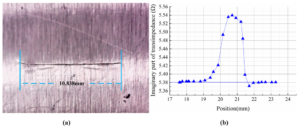 Fatigue crack sensor uses different input feature combinations based on sensor data that are defined and tested, and different classification methods to determine a specimen is intact or damaged. Sensor data is acquired from steel specimen using a high-frequency fatigue crack sensor. The raw sensor data is pre-processed so that several features representing meaningful information of sensor data can be extracted.
Fatigue crack sensor uses different input feature combinations based on sensor data that are defined and tested, and different classification methods to determine a specimen is intact or damaged. Sensor data is acquired from steel specimen using a high-frequency fatigue crack sensor. The raw sensor data is pre-processed so that several features representing meaningful information of sensor data can be extracted.
Mapillary: city planning and inventory of roads
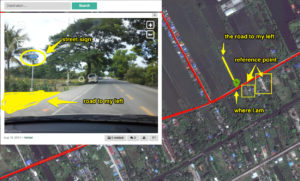
Mapillary uses machine learning to stitch together 3D visualizations of photos contributed by more than 12,000 users. The images are available via an API. With help of Mapillary city employees from all departments in the municipality will be able to see future investment areas combined with up to date photos on the map. The Mapillary mobile application can be used along a selected railway line to complete field observations and quality controls. With mapillary every user can turn street photos into 3D maps within minutes, view, edit, and extract geospatial data and automate hours of manual work with one click.
Data-enabled machine learning with smart buildings
 Data-enabled machine learning creates a smart building, whose defining feature is the ability to be proactive in making appropriate changes to services on behalf of its users. Smart building technology learns and anticipates the user’s preferences and altering conditions to meet his needs more precisely and exactly than we ourselves can. The huge amount of data can help smart buildings make reactive and personalized real-time alterations to a building’s environment to suit its occupants. The same technology can prolong time that elderly people can remain in their own homes by allowing remote monitoring of health through blood pressure and heart monitors that note behavior patterns and highlight any change that might indicate a problem. Smart buildings are conceived as upgradeable due to the fact that technology changes, with elements added in such a way that they can easily be changed as technology and the building’s use develop.
Data-enabled machine learning creates a smart building, whose defining feature is the ability to be proactive in making appropriate changes to services on behalf of its users. Smart building technology learns and anticipates the user’s preferences and altering conditions to meet his needs more precisely and exactly than we ourselves can. The huge amount of data can help smart buildings make reactive and personalized real-time alterations to a building’s environment to suit its occupants. The same technology can prolong time that elderly people can remain in their own homes by allowing remote monitoring of health through blood pressure and heart monitors that note behavior patterns and highlight any change that might indicate a problem. Smart buildings are conceived as upgradeable due to the fact that technology changes, with elements added in such a way that they can easily be changed as technology and the building’s use develop.
Estimation of energy performance of residential buildings
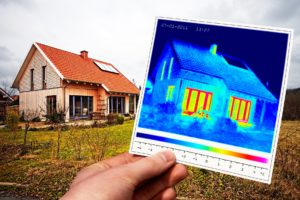 Artificial intelligence can be used for developing a statistical machine learning framework to study the effect of eight input variables (relative compactness, surface area, wall area, roof area, overall height, orientation, glazing area, glazing area distribution) on two output variables: heating load and cooling load, of residential buildings. Extensive simulations on 768 diverse residential buildings show that we can predict HL and CL with low mean absolute error deviations from the ground truth which is established using Ecotect (0.51 and 1.42, respectively). The results support the feasibility of using machine learning tools to estimate building parameters as a convenient and accurate approach, as long as query bears resemblance to the data actually used to train the mathematical model.
Artificial intelligence can be used for developing a statistical machine learning framework to study the effect of eight input variables (relative compactness, surface area, wall area, roof area, overall height, orientation, glazing area, glazing area distribution) on two output variables: heating load and cooling load, of residential buildings. Extensive simulations on 768 diverse residential buildings show that we can predict HL and CL with low mean absolute error deviations from the ground truth which is established using Ecotect (0.51 and 1.42, respectively). The results support the feasibility of using machine learning tools to estimate building parameters as a convenient and accurate approach, as long as query bears resemblance to the data actually used to train the mathematical model.
Building energy management improvement
 Managing the energy and other needs in buildings efficiently and intelligently can have considerable benefits. A building energy management system (BEMS) is a sophisticated method to monitor and control the building’s energy needs. Next to energy management, the system can control and monitor a large variety of other aspects of the building regardless of whether it is residential or commercial.
Managing the energy and other needs in buildings efficiently and intelligently can have considerable benefits. A building energy management system (BEMS) is a sophisticated method to monitor and control the building’s energy needs. Next to energy management, the system can control and monitor a large variety of other aspects of the building regardless of whether it is residential or commercial.
The system combines an energy model of the building with external data such as weather forecasts and energy pricing signals to automatically write set points for the BEMS and execute Demand Response events. The SaaS software works with the buildings existing BEMS and utility demand response systems, incorporating weather forecasts, occupant comfort, utility prices and demand response signals into its optimization algorithms.
Artificial intelligence is really starting to make headway into the construction industry. Construction process is expected to change due to advances in the AI industry. Smart city planning, predictive modelling systems and autonomous building trucks are the near future of industry. More than that, Japanese heavy construction company Komatsu is developing the smart construction technology which involves taking aerial photos of the site using drones and then transforming those images into 3D data for the site and sending them in real-time. All these technologies will help make the construction process as well as the maintenance of commercial buildings when construction is complete much easier.
Author: AI.Business
If you like our articles, please subscribe to our monthly newsletter:
[mc4wp_form id=”763″]